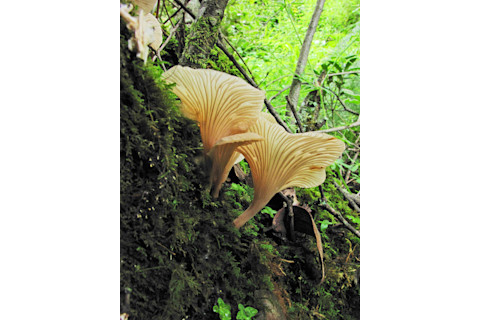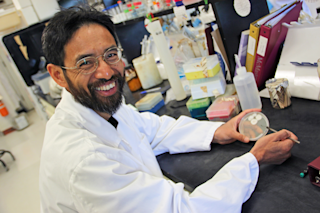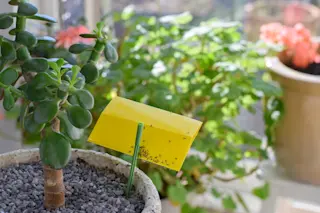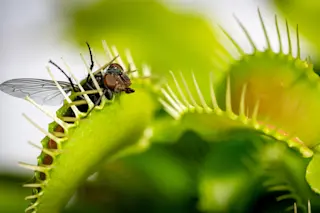Since the late 1970s, more than 400 people of all ages in remote areas of China’s southwestern Yunnan province have dropped dead — sometimes in midsentence — from a mysterious cause, mostly during the summer. The so-called sudden unexplained deaths (SUDs) seemed to be the result of heart attacks, but no one was sure what was prompting them as only half of the autopsies revealed underlying heart disease.
In 2010, Chinese health officials warned that, based on preliminary tests of the victims, the culprit was a dangerously high level of barium in a local edible mushroom, Trogia venenata. The little white mushroom isn’t valuable, but exports of other fungi, including matsutake and porcinis, are a major source of income for Yunnan’s native people; fears of barium poisoning could hurt the region’s economy.

A specimen of Trogia venenata, a fungus originally thought to be the cause of illness in southwestern China. | Jianping Xu
Not everyone was convinced that barium was the killer, so from 2009 to 2011, biologist Jianping Xu of McMaster University in Hamilton, Ontario, collected samples of the mushrooms to investigate.
In his own words...
Summer in southwestern China is the monsoon season, with heavy rain at unpredictable times throughout the day. The area has many deep gorges, rivers and steep mountains. Most villages with SUD cases are in very remote and hard-to-reach areas, requiring long walks or hill climbs.
For one of the trips, in 2010, we walked for five hours over 18 miles in the rain on muddy clay paths to reach the village. Because the mushroom is not common, we had to ask many locals before we found someone who knew a spot where it grew. By the time we finished collecting the mushrooms — and in the process we were bitten by many leeches — we were hungry and thirsty, and there was no way we could have walked all the way back.
Fortunately, we found someone with a motorbike who was moved by our efforts to solve one of the village’s problems and was willing to take us to our car. With three of us on the one bike, it took almost two hours to get back, and my graduate student was taken to the hospital because of severe fatigue.
In the end, we found that the mushroom didn’t have high concentrations of barium. Other mushrooms from Yunnan had normal levels of barium, too. We concluded that barium in this mushroom is not the cause of SUDs, as had been suggested.
There are likely multiple factors contributing to these deaths: other toxins in this species of mushroom, the genetics of the victims, contaminated food and other environmental factors. I hope now that people will not be concerned about barium in wild edible mushrooms in Yunnan.















